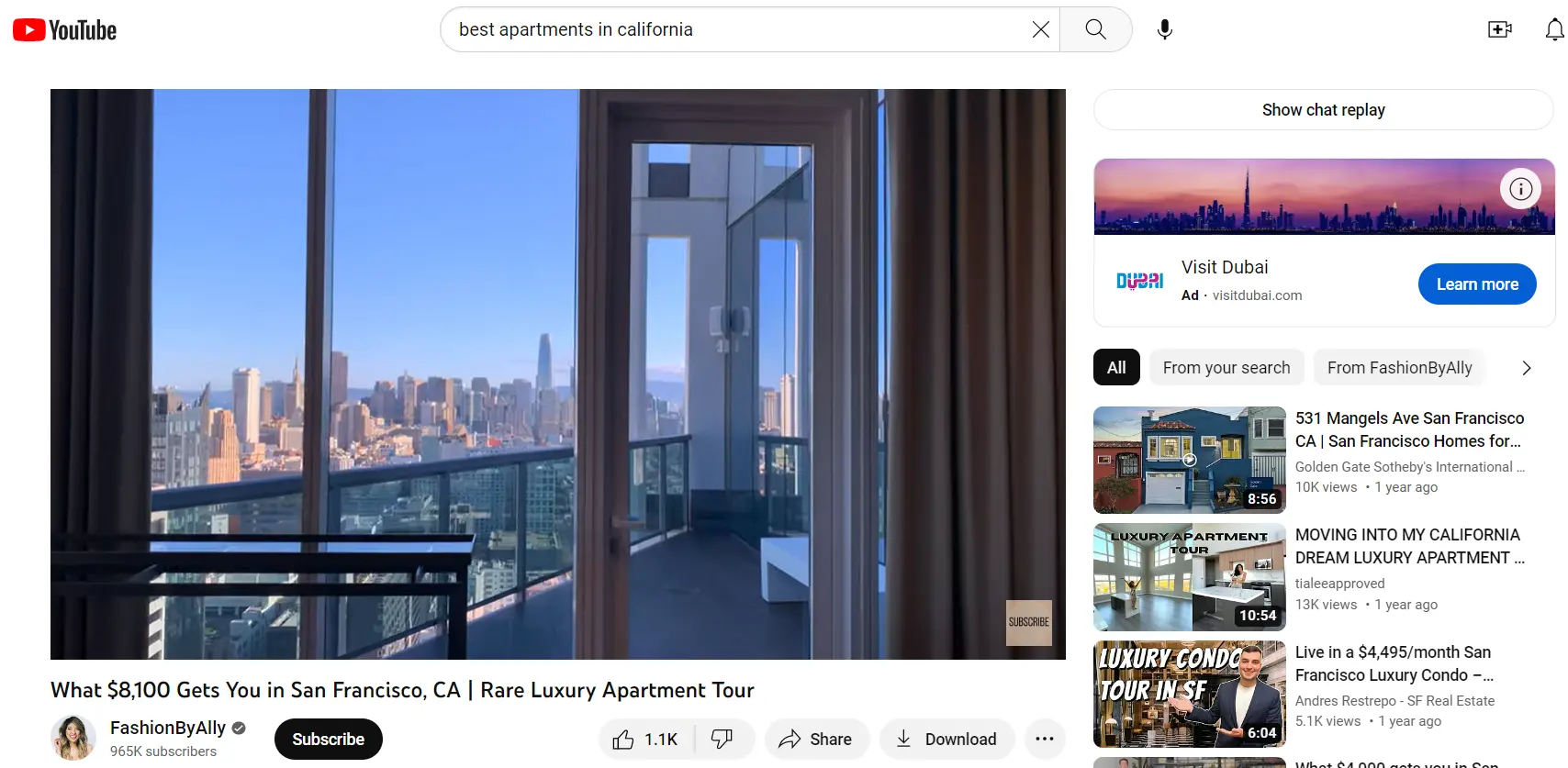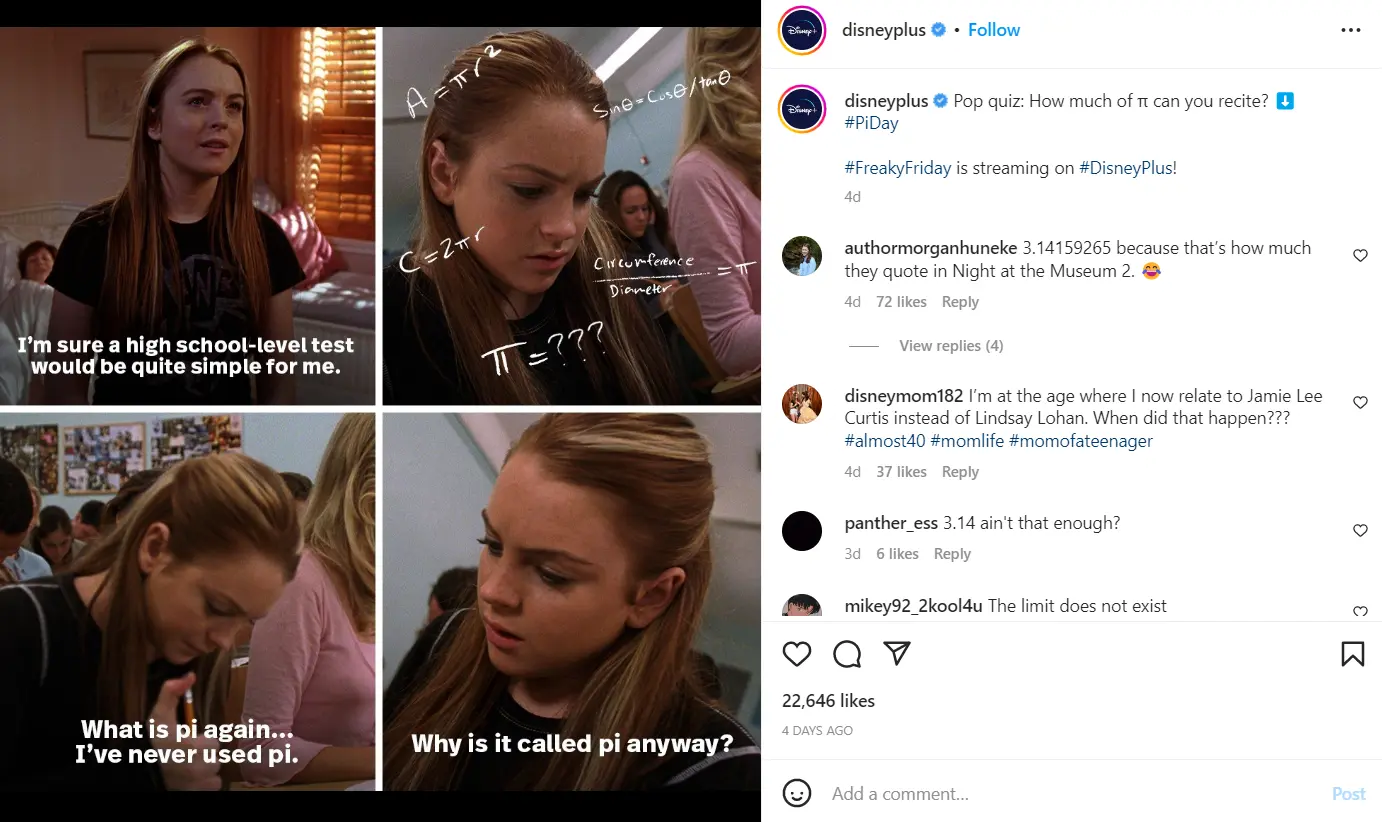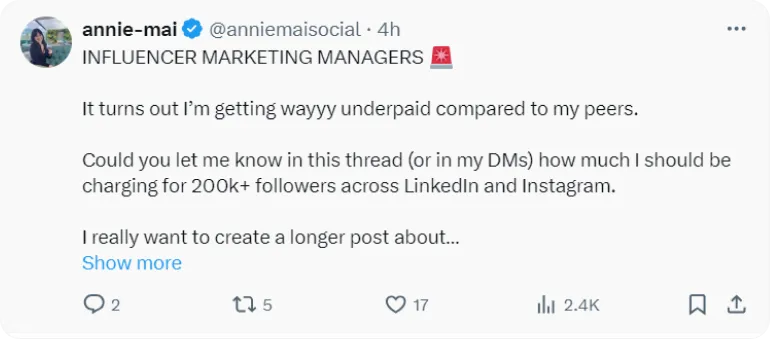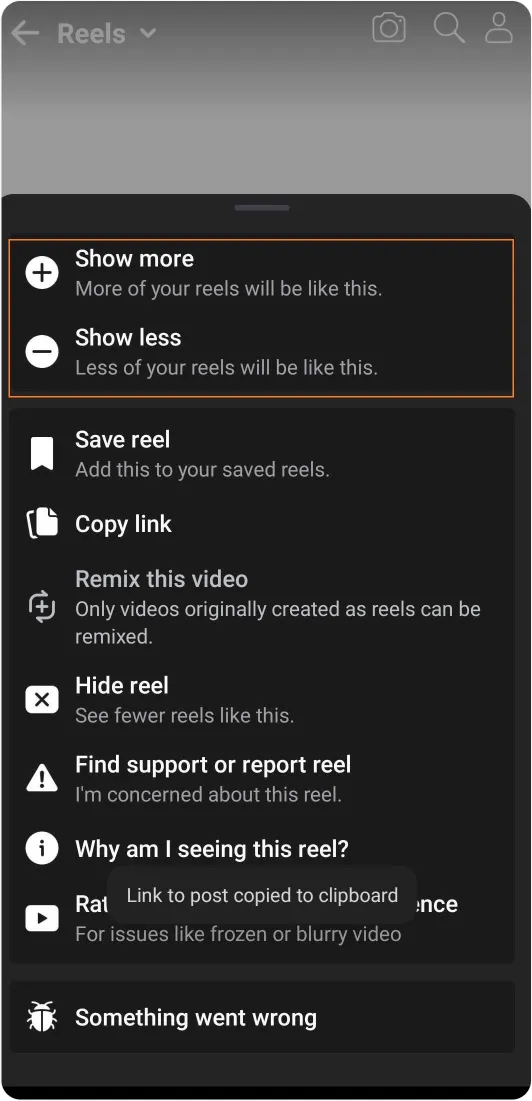Social media has become a beloved platform for connecting thousands of people. But would it still be interesting if it brought you close to content or profiles opposite to your interests?
Absolutely no!
Thankfully, social media algorithms exist to make social media live up to your expectations and bring you the content you want to engage with. As a social media marketer, algorithms lighten up your social media marketing strategies for your business.
On the other hand, the same algorithm can bring you low visibility and no traction if you are a budding influencer or marketer with a handful of followers.
Fortunately, you can cease your share of visibility on social media platforms by harnessing these algorithms. So, let us begin by understanding how algorithms work and what steps you can take to win over them.
What Is a Social Media Algorithm?
A social media algorithm is a complex set of rules and calculations used by social media platforms to prioritize the content that users see in their feeds. Past user behavior, content relevance, and the popularity of posts are some of the vital algorithm factors taken into account by different social media platforms.
Social media algorithms hold significant sway, using past interactions to predict and suggest content that aligns with individual user interests. As users engage with certain posts or accounts, the algorithm adjusts its recommendations accordingly, amplifying similar content. This dynamic process fosters tailored experiences, driving user engagement and satisfaction.
Why Are Social Media Algorithms Important?
Social media algorithms are complex mechanisms that decide what content will appear on a viewer’s feed. Every platform has its own set of ranking signals that make this decision and work harmonically with the user preferences.
Social media algorithms are important because they ensure everyone feels their feed is a personalized place that shows content related to their interests. It keeps them engaged on the platform for the long term and shapes users’ online experience by filtering the most interesting posts among the hundreds.
Social Media Algorithms is important because:
- It makes your feed personalized, showing you content that aligns with your interests and is relevant to your preferences.
- Helps in new and engaging content discovery based on the people you follow and the dislikes you have.
- By understanding how algorithms work, businesses and social media companies can set a tone for their niche and anticipate higher user engagement for the content.
- It attracts viewers to continue on the feed and keeps them engaged with the platform so they can spend more time.
How Do Social Media Algorithms Work?
Let’s start with a fun fact!
No social media users see the same content on their feeds daily. But how do social media platforms ensure users view content that is specially tailored for them?
The algorithms at play on all social media platforms keep your feeds interesting and engaging. In simple words, an algorithm is a sequence of instructions programmed to deliver content based on your past behavior and interaction on a social media platform.
1. Relevancy
Relevancy is the key factor that impacts the algorithm. The more you interact with a particular type of content on social media, the more likely it is that the algorithm will show you similar content in your feeds. Based on relevancy, social media platforms decide how to rank content in user feeds.
2. Filters Noise
Apart from relevancy, social platforms place a strong emphasis on content from your friends, following, and connections. However, the algorithms also work the other way around and filter out noise. For example, if you have a connection or friend posting content you don’t interact with, a social media algorithm will filter out all that content for you.
3. Sponsored Content Based on Interest
Sponsored content, aka ads, are paid advertisements that target a specific set of audiences. Meta, Twitter, LinkedIn, and all other advertising platforms show sponsored content that reflects your taste and interest.
For a profile that engages with tech-related content, social media channels show sponsored posts related to the tech and software industry as the algorithm tries to keep the feeds true to the user’s interest.
Now, we’ll get a bit more technical and explore each of the social media algorithms.
8 Social Media Algorithms by Platform
All social media platforms have their algorithm comprising various ranking signals. You can never determine all these ranking signals, but you can surely mold your content strategy to win your share of visibility on social media.
Here are some platform-specific ranking signals to keep in mind for every social media platform.
1. Facebook Algorithm
Facebook is the leading social media platform, with over 3.07 billion users worldwide. With that number, it is crucially important for brands and marketers to win the Facebook algorithm and reach a wider audience. So, here are some ranking signals to take into account while creating your marketing strategies:
- Facebook friends and followers: Facebook primarily gives user preferences to content from your friends and the pages you follow.
- The level of engagement: The Facebook algorithm boosts content with a high number of likes, shares, and views as it signals higher engagement.
- Content type: The more you watch a particular content format, the more you will find it in your feed. For example, if you engage more with reels, the algorithm brings you more of that on your feed.
- Quality of content: Authenticity, informativity, and content accuracy are also major ranking signals. To ensure content quality Meta has independent fact-checkers that move the post down in feeds if detected as partially or completely false.
2. YouTube Algorithm
YouTube is capable of keeping its users hooked for hours, thanks to its ranking signals, which are as follows:
- Watch history: YouTube places major emphasis on your watch history and recommends content based on your past views.
- Video performance: Like other social platforms, Youtube also gives preference to popular content, which it measures through likes, views, and click-through rates.
- Context: As a video streaming platform, YouTube also gives preference to videos that viewers often watch together, and those related videos end up alongside the video you stream.
Herein is an example of how the YouTube algorithm brings you videos related to your search term alongside the video you stream.

- Watch hours: Another factor that acts as an important ranking signal is watch hours. So, if any of your videos keep the viewers engaged and have a higher average watch time, it stands a higher chance to rank as per YouTube’s algorithm.
YouTube algorithms rely on an AI-driven recommendation model that filters content to offer a personalized recommendation to every user. The prominent ranking signals considered by YouTube’s algorithm include experience, expertise, trustworthiness, and authoritativeness.
Not just that, YouTube constantly segregates authoritative and trustworthy content from misleading content and educates its users to spot misinformation at all levels.

3. Instagram Algorithm
The Instagram app is divided into three sections – feed, reels, and explore. Each section has its specific algorithm tailored to display personalized content for every user.
Instagram Feed and Stories
The feed and stories section displays recent content from the accounts you follow and suggested content based on your past activity. That sounds pretty simple, right?
So, where does the algorithm help in this?
The Instagram algorithm plays a significant role here by ranking content based on various factors that, in turn, keep your feeds and stories interesting for you. These ranking factors include:
- Your activity: Your activity helps Instagram’s algorithm understand your interests, including how many posts from an account you have liked.
- Your interaction history: Your interaction history with others helps the algorithm understand your interest in the people you follow and consider how many of their posts you have liked.
- Post information: Information like how many users liked a post, when it was posted, its length, and where it was posted also impacts its visibility in feeds.
- Information about the person who posted the content: It helps the algorithm determine how interesting the person seems to you. This is also determined by how many others have interacted with that account in the past few days.
Instagram Explore
The explore section helps the users to find new content. This content includes recommendations based on signals like what content you have viewed, liked, and commented on lately.
For example, say I recently liked the reels of an Instagram creator called @XYZ. Instagram looks at all the other users who have liked the content of @XYZ. So, if a majority of users who liked content from creator @XYZ have also liked the content from creator @ABC, then the Explore page may show you content from @ABC the next time you use the app.
Essentially, the Instagram algorithm shows content related to your interests without fully comprehending the content of each post.
Instagram Reels
Instagram’s Reels feature is designed to provide entertainment to its users. Similar to the Explore page, Reels shows content from accounts you don’t follow. The algorithm sources Reels that it thinks you might like and orders them based on how interesting it believes they are to you.
However, with Reels, the primary focus is on entertainment. Instagram surveys users to determine if they find a particular Reel funny or entertaining, using the feedback to improve its ability to predict what will entertain people. The algorithm also prioritizes smaller creators in its content selection process.
The most crucial predictions that the algorithm makes are whether you are likely to watch a Reel in its entirety, like it, and visit the audio page (which serves as a proxy for whether you might be inspired to create your reel).
Here is a quick read to learn more about the Instagram reels algorithm.
4. Twitter Algorithm
Twitter’s algorithm uses several ranking signals to rank content on its platform. These ranking signals include:
- User interactions: It includes accounts and the tweets you frequently engage with.
- Recent topics: Twitter also gives preference to recent topics that make it to the “What’s Happening” sections. On the other hand, location affects what shows up in trends.
- Popularity: Twitter also considers the current popularity of a topic, trend, or tweet, including the level of engagement and activity from users in your network.
- Recency: Twitter’s algorithm also emphasizes recency when determining which tweets to show in a user’s timeline. As a general rule, Twitter prioritizes recent tweets in a user’s timeline, with newer tweets appearing higher up and pushing older tweets down.
5. LinkedIn Algorithm
Just like all other social media platforms, LinkedIn’s algorithm focuses on engagement and prioritizing relevant content for its millions of users. Here are crucial LinkedIn ranking signals:
- Quality of post: The first ranking signal emphasizes the quality of the post. Based on this, your content can be categorized as spammy, poor quality, or high quality. However, LinkedIn has its own take on what should be categorized as high-quality content. It considers whether a post is
- easy to read
- Includes strong keywords
- Uses two to three hashtags
- Encourages responses
- Early engagement: It is the second most important ranking factor, which determines whether a post should be pushed higher in the feeds.
- LinkedIn connections: Your connections are the third-ranking factor that ensures that your post appears in the feeds of your close LinkedIn connections.
6. Pinterest Algorithm
Pinterest works a tad differently than other platforms in terms of algorithms and focuses on these major ranking signals:
- Website ownership and quality: Website ownership and quality are the most crucial ranking factors. Here, the popularity of pins that link to a website determines the quality. So, if pins from a particular website are popular on the platform, Pinterest prioritizes content from that specific website.
- Engagement levels: Another crucial ranking factor is the engagement levels, which evaluate the pinners’ accounts and individual pins to determine it.
7. TikTok Algorithm
TikTok has its own set of ranking factors that place more emphasis on new content than on whom you follow. Based on that, here are some important ranking signals for Tiktok:
- Video information: The video information, such as hashtags, captions, sounds, and effects, helps the algorithm to understand what a particular type of content is all about and ranks it accordingly on the “For You” page.
- Past interactions: With past interactions, social algorithms analyze user behavior on TikTok. This includes information like video likes, shares, comments posted, accounts followed, and video favorites. Based on this data, the platform analyzes your preferences and how they change with time. With this analysis, TikTok ranks videos for every individual user.
- Account and device indicators: The algorithm also pays close attention to the account settings and device information of every user to optimize performance. This information includes:
- Device type
- Language preferences
- Country settings
- Categories selected
With this information, it becomes easy to understand your preferred language for content, preferred category of content, etc.
Unlike most other platforms, TikTok doesn’t consider followers to be a ranking signal. Instead, TikTok’s algorithm works to bring new content that you may like regardless of who you follow.
8. Thread Algorithm
The thread algorithm is designed to show content that will interest users. This algorithm system is powered by artificial intelligence and uses AI ranking signals. Being a part of Meta and Instagram, every piece of content on Threads App must follow the Instagram community guidelines.
Threads algorithm adheres to several ranking signals, such as
- User Control and Intentions: On Thread, user’s experience is backed by the content they are interested in and are more likely to engage with. Their preference is analyzed constantly based on the content they interact with and what preferences they have set in the application settings.
- Author’s Instagram Profile: Engagement and presence on the Instagram App also count when the Thread algorithm pushes your content to audiences.
- Post Performance: When the Thread algorithm pushes your content to your followers, it reads their response, and based on the feedback and engagement, it pushes it to a wider audience; thus, your post popularity and performance matter on Thread.
7 Tips to Win Over Social Media Platform Algorithm
Now that we have some idea of how social media algorithms work, the next step is to master the skill of leveraging the algorithm with your content strategies. Here is exactly how you can do it:
1. Focus on the Quality
Social media algorithms rely heavily on signals such as content relevance and quality. These signals are crucial because the algorithms aim to display content that users are likely to find interesting. Among all the ranking factors, content quality is the most prominent one for every platform.
So the key to passing the quality test is to offer the content your audience wants. It can be entertaining, inspiring, or educating, depending on what your audience wants to view.
For instance, if you are a popular fashion influencer on Instagram, then your audience would expect fashion inspiration and style guidance through your posts. If you run a DIY channel on YouTube, your audience would expect you to share tips and tricks and easy hacks to do anything manually.
The key is to ensure that you show relevant content to your audience. Also, make sure that the content you create matches the audience’s expectations and drives engagement, as it is a major factor in determining content quality for all social media platforms.
Here is an example of how an AI Architecture & Design platform, DesignMidjourney, does it for its Instagram profile.

They do not just focus on AI architecture and design but keep it utterly interesting to keep their followers engaged.
2. Attract Likes, Comments, Shares, and Saves
Audience engagement is an important ranking factor for social media algorithms. So how do you get that?
Of course, the key to attracting higher likes, shares, and comments is to create content that encourages social media engagement. A simple yet effective approach to increase engagement is by asking for it.
Caption your post with a question, or use the first comment to begin an interaction. Here is how Disneyplus does it on Instagram.

In the above post, Disneyplus wins its followers’ engagement with a quiz question as a caption. The brand interacts with its audience every time and triggers interactions with quizzes, questions, and fandom trends.
3. Know The Best Time to Post Content
The time you post content plays a significant role in how the social media algorithm ranks content in your followers’ feeds. Here, the main parameter that influences the display of your social media posts is recency.
Generally, the most recent posts are given priority over those that are days or weeks old, resulting in a higher ranking on the feeds.
It’s essential to consider the optimal times to post on social media to increase the likelihood of your audience seeing and engaging with your posts. However, remember that posting at the best times alone does not guarantee engagement.
Although posting at optimal times may attract attention, the ultimate fate of your posts depends on the quality of the content you create. Each social media account has its own optimal time for posting content.
4. Follow Trends to Gain Traction
Social media platforms prioritize trending topics as they drive user engagement. As a result, the algorithms aim to display more of such content to users to keep them scrolling through their feeds.
While it’s not necessary to hop onto every trend, it can be worthwhile to explore trends that align with your brand messaging. To do this, consider leveraging tools like Google Trends to identify what’s trending online in general and utilize social listening programs to understand what’s happening within your specific industry.
You can also follow trends through hashtags and find trendy hashtags that go with your content. You can also go with popular Instagram reel trends. ASOS rocks the reel trend game and showcases products that individuals have tried to up their fashion game.

In the above reel, ASOS has shared a reel of a customer trying out their vintage jackets that will soon be launched on their website.
You can also keep an eye out for ways to integrate trending sounds and effects into short-form videos like TikToks and Instagram Reels. This can help to boost the visibility of your content and engage with your audience.
5. Experiment to Know What Works Best
There is no way to trick the algorithm and gain higher visibility on social media without offering value to your viewers. So, whether you are a marketer or business owner, experimenting with content is the key to understanding what drives better engagement.
To begin experimenting, start by observing what information your audience is seeking. Also, pay attention to what your close competition is offering on social media.
Once you do that, test various forms of interactive content, such as images, polls, videos, and stories, to see which brings you more engagement. Analyze the performance of all the content experiments you do.
For better evaluation, pay close attention to performance metrics such as reach, engagement, and clicks to understand which of your content experiments are most liked by your audience.
Once you know your top-performing content, you can begin creating more of that to gain more visibility in feeds.
6. Share More Video Content
Have you ever realized that video content reaches more people than static posts? Yes. Many platforms, such as Instagram, TikTok, etc., favor motion content more than images. Their social media algorithms are designed to show more video content on users’ feeds.
However, sharing consistent video posts is not a simple task; therefore, many social media platforms promote short videos, too. These are upto 3-15 seconds and do not demand much time to make.
Video content is encouraged because it engages users more extensively. It meets the platform’s goal of keeping the user stuck to the feed for longer. This is why most algorithms are coded to show more motion or video content on the user feed. Making these types of content can get you a higher reach on social channels.
7. Find Out Your Publishing Frequency
When we talk about experimenting, publishing interval and frequency also count. Some brands stick to a set parameter for their posting interval, and some continue to change it every now and then. Their social media marketing strategy depends upon what works for them.
You should have a different posting strategy and approach for every social channel. Instagram’s posting strategy will not work for platforms like YouTube, and vice versa. Similarly, posting multiple video content daily on Instagram or TikTok does not guarantee reach.
The recommended posting frequency for major social channels are:
- Instagram: 3-7 times per week
- Facebook: 1-2 times a day
- Twitter: 1-5 Tweets a day
- LinkedIn: 1-5 times a day
Therefore, figuring out your most suitable posting pattern requires experimenting and ideation. To understand that, you should have access to a perfectly accurate analytics tool to monitor the performance of your content.
Using native analytics to gauge the performance of multiple social media accounts is like squeezing water from a stone. Such analytics data remains scattered and restricted to the analytics section of various social accounts.
The social media analytics feature by SocialPilot offers you comprehensive analytics for all the content you post on social media. It brings you data from all your social media accounts in one place. This unified data help you view content performance and generate shareable PDF reports effortlessly.

Social Media Platforms Algorithm Examples
To prove the above points, we’ll show you some examples of just how definitively social media algorithm tracks your digital footprints all over the platform.
- Relevancy can be seen on social media pretty blatantly, mainly on LinkedIn, Twitter, Instagram and Facebook. For example, I have been working on Influencer marketing-related campaigns a lot and trying to keep up with them on many channels. This has led to Twitter suggesting content from niche micro-influencers all the time.

- Social media algorithms work tirelessly to figure out our interests, thats for sure. But they are even more interested in finding out what we do not like. Thats why, while scrolling through your Instagram feed, you will often find a question asking whether you are interested in the post they showed. Clicking on “Not Interested” will lead to the platform refraining from suggesting related content to you in the future.

Another example of Meta doing the same for Facebook to improve their suggestions:

- Sponsored posts are essentially content that brands pay to display to their target audiences. Algorithms play a crucial role in social media marketing by analyzing user interests and presenting them with relevant paid content to encourage engagement. This results in more clicks, benefiting both the brands and the users involved. Below is an example of a paid post by LinkedIn on the feed of a marketing agency’s page:

These were some run-of-the-mill examples of the algorithms at work. Now, we’ll get a bit more technical and explore each of the social media algorithms.
Supercharge Your Social Media Marketing Strategy by Winning Over the Algorithm
Mastering social media algorithms is crucial for any business or individual looking to succeed in today’s digital landscape. By understanding how algorithms work and leveraging the right tools and strategies, you can increase your visibility, reach, and engagement on social media.
However, the algorithms are constantly evolving, and it can be a tad difficult to stay up-to-date with the latest trends and changes. Adding to this difficulty is the hassle of creating quality content and posting it at the right time.
To make things easier, SocialPilot’s scheduling feature can be at your rescue. You can use it to create a content schedule and ensure that your content gets posted on various social media platforms at the right time.
So, try it for free now and designate your own path to success on social media platforms.



-359x188.jpg)